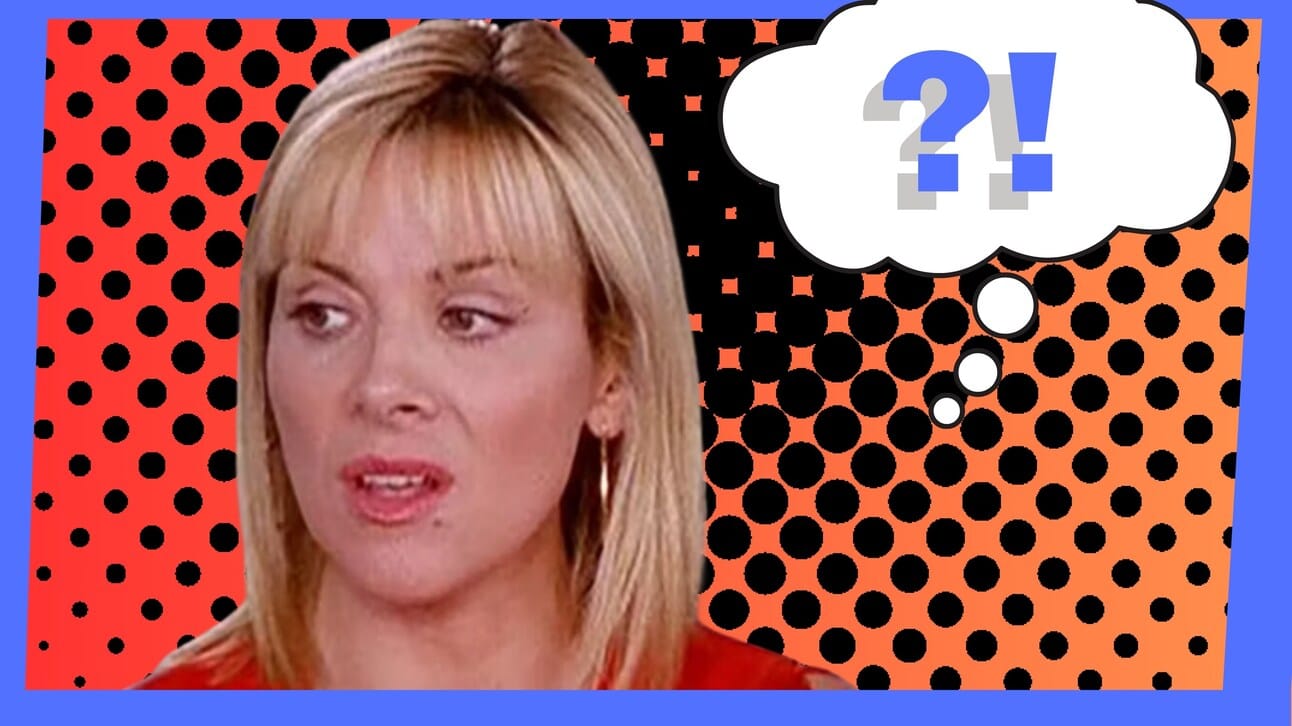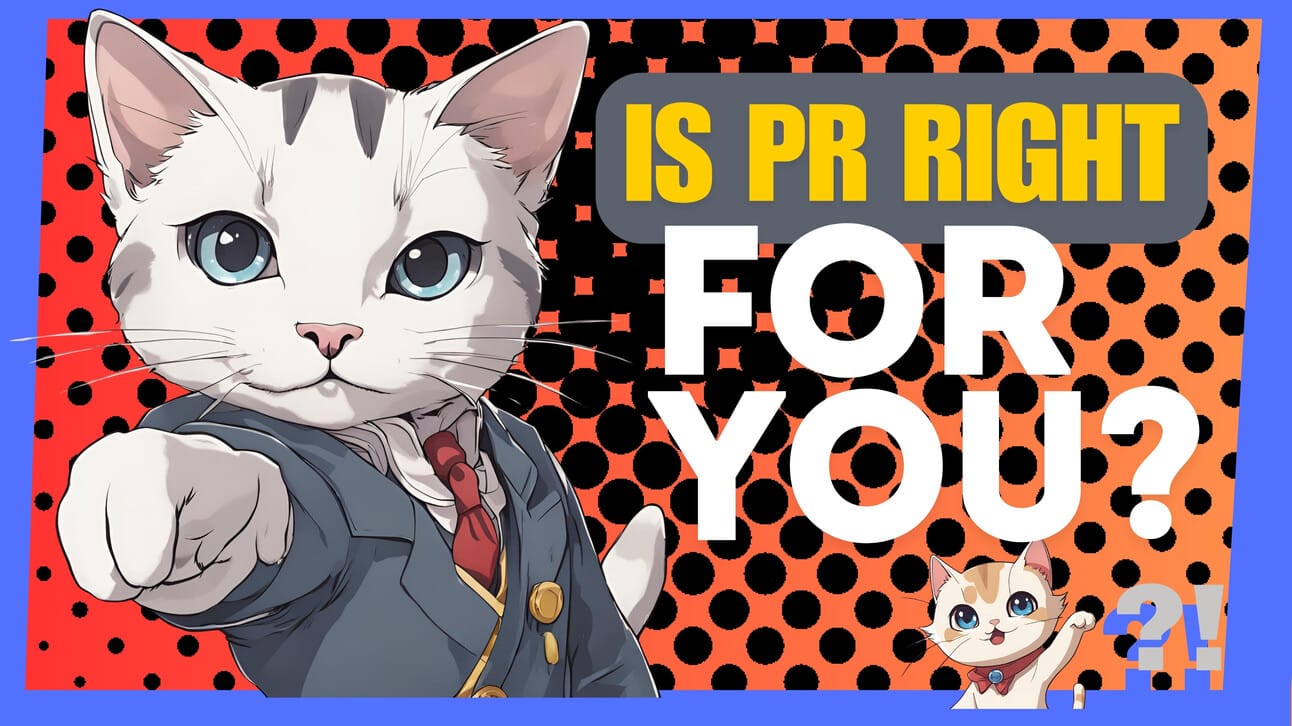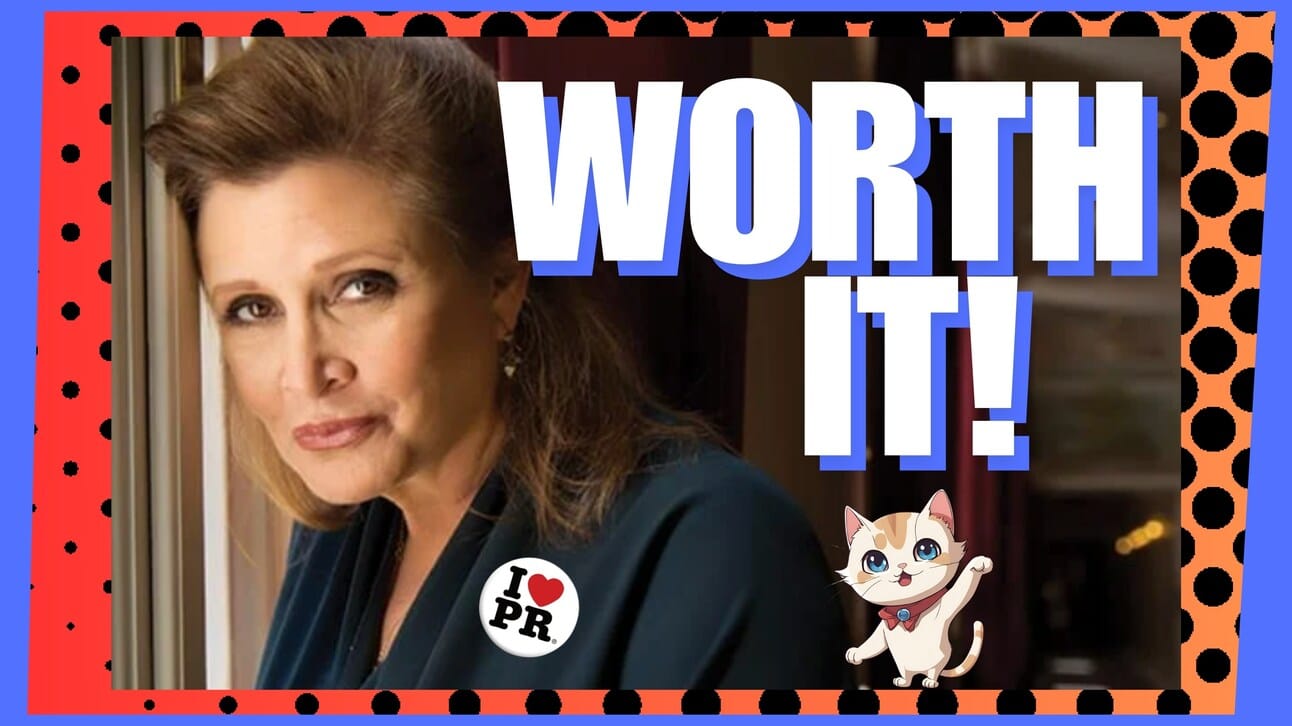- Captain Hook
- Posts
- Is PR Still Worth It?
Is PR Still Worth It?
Folks worry and I get it. Disruption is seldom fun when it strikes the ground beneath your feet. But the answer is very much yes — especially once you recognize why.

“What’s going on here, people?”
Is PR dead? Is the media collapsing? Is AI taking over everything? By this time next year will the robots have us all locked in cages, poking us with sticks?
Okay. Deep breath. Slow yoga exhale. Yes, I kid this moment of collective anxiety, because laughter is what separates us from our imminent robot overlords.
But what I take seriously, and will briefly unpack, are the rational worries stemming from big changes — and corresponding challenges — transforming and, yes, disrupting our journalist-PR community.
I hear the worries from colleagues, from clients, from friends. I bet you do as well. And I recognize that for any of us, on any given bad day, such concerns can snowball into a crisis of confidence.
When faced with limited budgets but seemingly endless pressures, business leaders especially are likely asking: Is PR still worth it? Still worth figuring out? Still worth prioritizing? Still worth paying for?
The macro answers are easy. Yes. Yes. And yes.
But confession time: I packaged this post with the wrong question. The right question, always and forever, remains:

And right for you right now…?
Meaning: are you ready for PR at this point in your brand journey? And that, of course, depends first on your objectives, and second on your state of readiness. (I can help you answer the latter part here and here.)
Not every brand, for example, needs to be a thought leader. Not every brand needs to speak to consumers and the investment community. Each case is specific. Each story is unique. And your story is going to evolve over time. Along the way, it must stay responsive to an evolving content landscape across a growing array of channels.
Effective storytellers adapt to new mediums and new audiences. And that absolute PR law of nature is equally applicable, by the way, whether you’re a global titan like Disney or Paramount (both taking beatings presently) or a brand new body scrub with two employees.
So keep your eyes on the horizon
Disruption (both seen and yet unimagined) not only won’t remove the vital need for inspired PR, all tomorrow’s increasingly fast-paced cultural and technological curveballs will only make it that much more indispensable.
Dumpster fire of the anxieties
Still, the day–to-day stresses and worries are no less substantial.
Journalists
In a word, layoffs. It’s a shock to see both venerable titles like Sports Illustrated and innovative digital outlets like The Messenger and Vice hitting the rocks hard. Far too many journalists are consequently either working a lot more for less or out there looking for work.
Publicists
In a word, journalism. Publicists see their communications ecosystem counterparts taking harsh blows and know the old ways of working won’t quite work the same anymore. Meanwhile, some clients want to lower budgets while raising expectations. And with so many new content channels, there’s far more ground to cover in an accelerated, always-on news cycle.
Businesses
In a word, spooked. Company heads look at this confusing landscape and wonder if that PR juice is still worth the squeeze given an uncertain new normal that feels like anything but.
(And would those businesses ideally like to replace us with robots? If doing so costs less and works almost as well or better… in a nanosecond.)
So here we all are — alarmed by the same disruption but missing the point from different angles.
Misperception panic vs long-horizon realities
Yes, a lot of publications are going away or enduring a bumpy reinvention. Digital transformation was inevitably going to make some business models obsolete — e.g., classified ads in a small local paper could never survive Craigslist.
But from the ashes of layoffs, journalists are also being empowered by that very same digital transformation. New platforms allow them to publish and build large audiences without a boss or other filters. They can now monetize their work with or without advertisers. In some cases, they can even reach millions more eyeballs than the peak of the old media circulation era — with content that typically has a far longer shelf life, remaining accessible and searchable, across multiple channels, like never before.
And, importantly, good relationships travel wherever those journalists (read: content creators with legacy credibility) land and bloom.
Meanwhile, a lot of enforced “conventional wisdom” that constrained everyone keeps getting knocked down. How many years were we shackled to the mainstream media’s arrogant insistence that audiences had no attention span, that everything had to be simple and short unless you were The New Yorker?
And, honestly, the cycle of arrogance-to-humility-to-ascendant upstarts has always been the case. It just feels unprecedented and destabilizing to every new generation that eventually finds the floor “abruptly” giving way beneath their desk. Sound movies came along and farewell radio, they believed. Who will ever be content to just listen to people talking for hours ever again? Television came along and goodbye movies, so it seemed. Why get off the couch and go to a theater? Today, it’s video games, Amazon, VR… why even leave the house?
Closer to home, we have colleagues worrying about whether Google's AI Overviews will demote affiliate and review sites in favor of big e-commerce players like Amazon and Home Depot for product keyword SEO. Looks that way. But at the same time, UGC sites like YouTube are suddenly faring better. And guess what? Google will keep tweaking, as they always do, and the apple cart will inevitably end up toppled in a different direction, then possibly back again.

But your brand story, why it matters, and how it will reach the right audience(s) are factors that persist no matter what.
Guaranteed.
So, sure, the boom and bust cycles are real — with real consequences — but it’s important to realize that neither phase of the cycle is forever nor absolute. (Did you imagine the kids would usher back vinyl records? If so, your crystal ball beats mine.)
With PR or nearly anything else, efficient adaptation is about a long-horizon mindset — and PR at its most long-horizon critical (and valuable) is about relationships.
Relationships + insider context + storytelling
One analogy I like to use is the doorman.
On the one hand, it’s easy to think: Hey, I’m paying this person to sit around all day, signing for a package or two, opening the door? I can open the door myself!
And sure, that’s true. You can DM journalists yourself when the day comes that you “need a door open” because you have a good story to share — or maybe, more urgently, a bad story you need to quickly get ahead of, before deep damage is done.
But you see, that doorman who, to you, appears to be just sitting around, he knows everyone. He knows not only every other tenant in your building and what they’re up to day and night, he knows the other doorman in the building — and the doorman in nearly every nearby building. Heck, he probably knows the superintendents too. Day after day, night after night, that doorman has eyes and ears on the street, alongside a deep network of sources, informants, and friends.
So on one level, it’s just about this simple: Whom are you more likely to engage with? A) The person you have never met before approaching to ask for your help, your time, your attention — or B) the person asking for help with whom you already have a longstanding, symbiotic relationship?
Add to that the various dialects spoken between journalists, editors, and publicists — a language seldom completely accessible to outsiders. Are those dialects as cryptic and rigid as with lawyers or oncologists? Maybe not, but close enough.
And the most essential language is storytelling. You might think, Well, I can DM influencers and send them my product. Again, sure. But what’s the story? What’s the clever, standout campaign that’s going to influence and direct the influencer? How does it integrate with your packaging, marketing, distribution model, etc.?
To that end, a good publicist is an invaluable editor. They’re with you inside the tent but capable of viewing your brand from the outside. They can flag what won’t work before you waste time and goodwill finding out the hard way. They can polish and elevate the first iteration of a story that will amplify your strengths and manifest what you seek to achieve. They are also your agent, prepared to promote and protect that story.
Can you manage all that yourself? Maybe. Then again, think of the doorman analogy.
Because I see it often. Entrepreneurs will say I don’t want to do PR, until suddenly they do… because, bam, now there’s the perfect stars-aligning moment!
But by then, it’s too late to enter the arena. They want to raise the big tent, but just finding a clearing takes time. And if you’re not arriving with a solid framing developed by an experienced storyteller, do you really like those odds?
The audience is not shrinking — and they’re always smarter than we think
Major media outlets are not drying up because people have lost their appetite for content.
Hardly.
Major media outlets are drying up, or adapting, because of content competition that was once inconceivable. Tastes change, always have, and now there are more options. But again, the generalities have little value relative to your specific brand objectives, story, and audience.
That ad that everyone saw was never for everyone. It just cost that much. Targeting is better than ever, and of course that can be attributed to technology. But that’s still only half of the picture. What’s the value of a new product ad that can pop up on the phone of every cat lover in North America, right now, if the ad has nothing impactful to say? If it isn’t part of a larger, well-crafted strategy?
This is why we’re seeing CMO’s lean more on their PR partners. Marketing needs to live in a content universe that extends across earned (because consumers will search to find out if this new brand/product is legit and to learn what they’re all about) on down to micro- and nano-influencers. No, those aren’t the latest Marvel characters. Take it away, Forbes:
Today, micro- and nano-influencers are on the ascent, and for a very good reason: precisely because their audiences are (relatively) small, they're able to forge a more intimate connection with their audiences. When a micro-influencer makes a persuasive case for a product, it seems less like advertising and more like a recommendation from a trusted friend.
So for smaller, newer businesses especially, PR is the marketing piece with both the greatest depth — for establishing legitimacy/credibility — and reach — for getting into the spaces, both small and large, where consumers live.
(With TikTok leading the pack for now).
Time to tell our own story better too
Ironically, the most critical callout I have is that the PR industry has awful PR — for itself.
Seriously. I’m going on the record right now.
Can we please get some better PR for the PR industry? Can we stop putting ourselves last, come out from behind the scenes, and tell our own story much better? (I actually want to start a group — get a little committee or something going where we can focus on pushing better PR out there with stats and metrics, because I don’t think anyone is doing that very well. Interested? Drop me a line. Think it’s a terrible idea? That’s okay, drop me a line anyway.)
Because we should be bullish. Behold some recent stats courtesy of the Brandpoint marketing agency:
96% of PR professionals anticipate their budget will increase in 2024 and the next three years — a 15% increase from 2023
Nearly all those surveyed expected the integration between PR and digital marketing to increase in 2024
Technological advancements, increased information, and maintaining reputation all were top themes when asked for trends and challenges
And according to blue chip industry analysts Gartner, the PR agency market is “rapidly growing and expected to top $133 billion in 2027.”
One key consideration given PR’s growing market size: the ratio of publicists to journalists is now estimated at 6 to 1. This heightens the need for a strong platform solution that makes it easier (and more efficient) for all of us to communicate and collaborate together.
So, having the big picture in better focus now, permit me to conclude with the infectiously fired-up words of Carrie Fisher — her go-to exclamation being something we can all repeat like a mantra on difficult days…

Reply